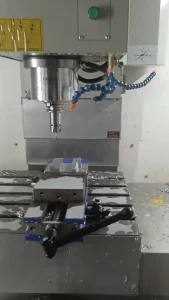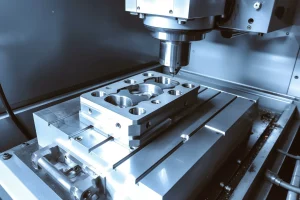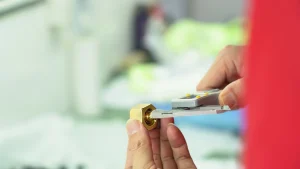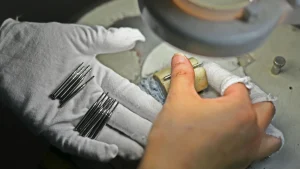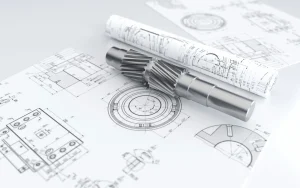In the field of CNC machining, we often hear terms like 3-axis, 4-axis, and 5-axis machining. These terms sound impressive, but many users struggle to fully grasp their meaning. CNC milling machines are categorized by the number of axes they operate. This number of axes largely determines the features of parts they can produce and also impacts production precision and efficiency. Generally speaking, the more axes available, the more complex the parts they can produce.
What are the differences between 3-axis, 4-axis, and 5-axis machining? What are the advantages of each? What types of products are they best suited for? Let’s explore the differences today with Hongweisheng:
1. 3-axis CNC Machining
3-axis CNC machining generally refers to machining with three axes of linear motion in different directions, such as up and down, front and back, and left and right.
A 3-axis CNC machine can only machine one surface at a time, making it suitable for disc-like parts.
It may be limited when machining holes or grooves on multiple surfaces.
2. 4-Axis CNC Machining
A 4-axis CNC machine adds a rotary axis to a 3-axis machine. This rotary axis is usually the A-axis (rotation around X-axis) or the B-axis (rotation around Y-axis), which allows the part to be rotated for machining on different sides.
However, it cannot achieve the same flexibility as 5-axis machining and is more suitable for machining box-like parts or cylindrical curved surfaces.
If drilling or milling is required on the side of a part or along a curved surface, a 4-axis machine is a better choice, significantly increasing machining efficiency and improving accuracy.
Some 4-axis machines can also perform limited milling/turning composite functions, depending on their configuration.
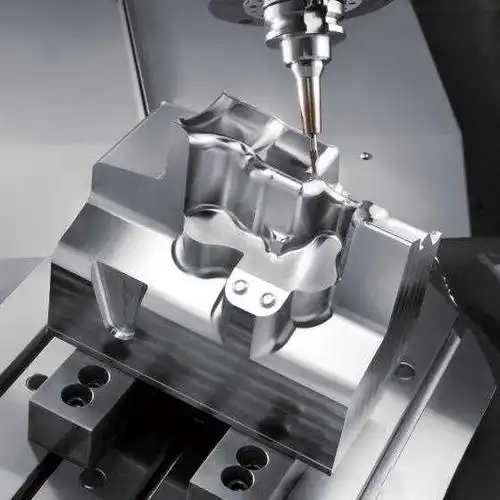
3. 5-Axis CNC Machining
A 5-axis CNC machine adds two rotary axes to the three linear axes, typically combinations of A, B, or C axes, which enable the tool or workpiece to be tilted and rotated.
5-axis CNC machining allows for comprehensive machining, enabling all machining steps to be completed in a single clamping operation, reducing clamping costs and product damage.
Because 5-axis CNC machining offers greater versatility, it’s more suitable for machining parts with more complex appearances and structures, such as prosthetics, medical components, aviation parts, titanium alloy parts, engine parts, and military products.
How should CNC machining manufacturers choose a model?
While 5-axis machining offers advantages unmatched by 3- and 4-axis machining, not all parts are suitable for 5-axis machining.
Some parts suitable for 3-axis machining will incur higher costs and may not produce the same results if machined on a 5-axis machine.
About RapidEfficient
RapidEfficient specializes in high-precision CNC machining with 18 years of experience. Its products cover medical, communications, optics, drones, intelligent robots, automotive, and office automation parts.
The company’s CNC machining centers include four-axis, five-axis, and linkage machine tools and are equipped with precision projectors, three-coordinate measuring machines, spectrometers, and other precision testing equipment.
- Machining accuracy: up to 0.01 mm
- Testing accuracy: up to 0.001 mm

